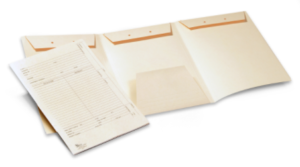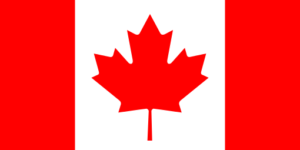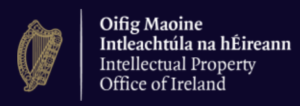
What a walk down memory lane! In one of the patent practitioner listservs, a member today asked where they could purchase heavy-duty trifold patent file folders. Continue reading “Trifold patent file folders”

Bluesky: @oppedahl.com

What a walk down memory lane! In one of the patent practitioner listservs, a member today asked where they could purchase heavy-duty trifold patent file folders. Continue reading “Trifold patent file folders”
Here are the results for the 2021 US Tote Boards.
The firm ranked first in filing of granted US plant patents in 2021 is Randall | Danskin. The runner-up is Koenig IP Works, PLLC. This is the third annual US Plant Patent Tote Board.
The firm ranked first in filing of granted US design patents in 2021 is Banner Witcoff. The runner-up is Birch, Stewart, Kolasch & Birch, LLP. This is the tenth annual US Design Patent Toteboard.
The firm ranked first in filing of granted US utility patents in 2021 is Oblon, McClelland, Maier & Neustadt, L.L.P. The runner-up is Sughrue Mion PLLC. This is the seventh annual US Utility Patent Toteboard.
The firm ranked first in filing of granted US trademark registrations in 2021 is Fross Zelnick Lehrman & Zissu, P.C. The runner-up is Muncy, Geissler, Olds & Lowe, P.C. This is the seventh annual US Trademark Registration Toteboard.
To see the 2021 US utility patent toteboard, click here.
![]() Several alert readers have pointed out to me a typographical error in yesterday’s blog article Welcome developments with DAS – Denmark. I incorrectly indicated that DPTO’s effective date for becoming an Accessing Office and a Depositing Office for utility models was September 17, 2021. The correct date was November 30, 2021. The first kind reader to spot this error and to report it to me was Debra Collier, located in Switzerland. Prompted by her I have corrected the blog article. Thank you to Ms. Collier!
Several alert readers have pointed out to me a typographical error in yesterday’s blog article Welcome developments with DAS – Denmark. I incorrectly indicated that DPTO’s effective date for becoming an Accessing Office and a Depositing Office for utility models was September 17, 2021. The correct date was November 30, 2021. The first kind reader to spot this error and to report it to me was Debra Collier, located in Switzerland. Prompted by her I have corrected the blog article. Thank you to Ms. Collier!
Sign up to attend a webinar on February 10, 2022, at 3 p.m. (Central European Time) about Best practices for recording of changes (Rule 92bis).
The speakers will be:
To register, click here.
![]() (Corrected on February 3, 2022 to show that the effective date is November 30, 2021, not September 17, 2021.)
(Corrected on February 3, 2022 to show that the effective date is November 30, 2021, not September 17, 2021.)
This is a busy time for good news about DAS. One piece of good news about DAS is that the Danish Patent and Trademark Office (DPTO) became an Accessing Office and a Depositing Office in DAS for utility model applications on November 30, 2021.
DPTO was already a Depositing Office for national patent applications and RO/DK was already a Depositing Office for PCT applications. And DPTO was already an Accessing Office for national patent applications. The big news here is that DPTO recently became both an Accessing Office and a Depositing Office for utility model applications.
This offers a reminder for those readers who are perhaps not as familiar with utility models as with other forms of intellectual property protection. It reminds us that Denmark offers utility model protection. WIPO has a very helpful web page that discusses utility models and lists the seventy-six Offices where utility model protection is available.
 This is a busy time for good news about DAS. One piece of good news about DAS is that the Canadian Intellectual Property Office (CIPO) became a Depositing Office in DAS for patent applications on February 1, 2022.
This is a busy time for good news about DAS. One piece of good news about DAS is that the Canadian Intellectual Property Office (CIPO) became a Depositing Office in DAS for patent applications on February 1, 2022.
CIPO was already a Depositing Office for national industrial design applications. There are actually two distinct pieces of good news about this development on February 1, 2022:

This is a busy time for good news about DAS. One piece of good news about DAS is that the Intellectual Property Office of Ireland will become an Accessing Office in DAS on February 17, 2022. It will participate as an Accessing Office with respect to the following:
By now I am astonished (in a good way) to see that more than 1300 people have registered so far for this series of fifteen webinars about the Patent Cooperation Treaty, a series that will commence on Tuesday, February 8, 2022.
My first topic for this blog article are a couple of related questions about this webinar series that came in the other day from a first loyal reader. He asked:
Is this geared more towards attorneys (i.e., strategic considerations) or paralegals (e.g., filing requirements)? If for attorneys, is it for newer attorneys not familiar with the PCT, or would someone with 25+ years of experience benefit?
A second topic for this blog article is a question that came in from a second loyal reader located outside of the US. She asked:
Will your presentations be focused on considerations that apply only to US practice and options and choices available only to US applicants? Can you let me know which portions to skip if they will not be of interest to me as a non-US filer?
These are all really good questions. I will try to answer these questions as best I can in this blog article. Continue reading “Who should attend the SLW Institute 2022 Virtual PCT Training Seminar?”
Hello Folks. There are five days remaining to hand in your numbers for the 2021 Tote Boards.
Every year, after the Tote Boards get finished and published, an email message will arrive from some law firm that did not hand in its numbers on time. The law firm begs to please be included in one or another of the Tote Boards. The result of course, is that some other firm that was, say, listed in third place in one of the Tote Boards might now end up in fourth place. But that firm might already have posted on their web site that they had earned third place on a Tote Board!
The way to avoid such problems of course is simply for you to hand in your numbers before the closing date. This year, the closing date will be Wednesday, February 2, 2022. That is five days from now. Please get your numbers in by the close of business on Wednesday, February, 2022. To hand in your numbers, click here.